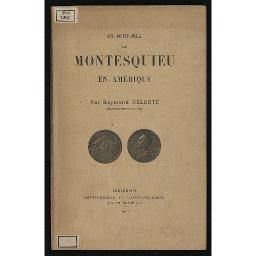bloc_article_content
France in the American War of Independence
After a period of hesitation, in 1778 the France of Louis XVI answered the call of the Continental Congress which, on 4 July 1776, adopted the Unanimous Declaration of the Thirteen United States of America, better known as the United States Declaration of Independence. It committed itself militarily and financially, above all for diplomatic and commercial reasons, aimed at countering Britain’s ambitions. This French military participation was decisive in the victory of the new American nation.
Old Franco-British rivalries
Enduring between France and England was considerably stoked by the crushing French defeat during the Seven Years War and the diktats of the Treaty of Paris in 1763 the main consequence of which was the loss of numerous colonies, including New-France. Even though the Duc de Choiseul had skillfully saved several key part of the kingdom’s economy – the cod of Newfoundland, the sugar of the Antilles, the slave trade in Africa and the trading stations in India – this treaty was nevertheless felt to be a real humiliation. As a result, and still under the direction of De Choiseul, France adopted a policy of rearmament, on both land and sea. These choices were to be decisive during the American War of Independence. From a diplomatic point of view, the idea of revenge arose early on, even if it was not considered to be necessarily of a military nature. French diplomacy rather set about stirring up conflicts within the British empire and became a rival in trade. The American revolution advanced both these ambitions. While weakening the enemy from within, it also raised the hope of reconfiguring the circuits of world trade, even if France at no time envisaged the idea of regaining Canada. While feigning neutrality, as of 1776 the French crown secretly provided the insurgents with materials, weapons (including the famous Vallière cannon) and munitions.
An alliance of reciprocal interests
Thus, the aid given to the insurgents should not by any means be seen as the French monarchy’s philosophical adhesion to the American political project. The reciprocal hostility between the Thirteen Colonies and France was quite strong, perhaps even more so than with Britain. On the other hand, a large part of public opinion, guided not only by many intellectuals but also the liberal nobility and financial milieus, supported the American cause. This support definitely influenced the response of Versailles to the requests of the representatives of Congress, Silas Deane, Benjamin Franklin and Thomas Jefferson who arrived in France in late 1776. The negotiations conducted by the Comte de Vergennes, State Secretary of Foreign Affairs, sped up after the British defeat at Saratoga on 17 October 1777, because there was fear of a peace agreement between the belligerents. This resulted in the signature of two treaties, on 6 February 1778, of friendship and alliance which granted reciprocal trade privileges and another military alliance as soon as war broke out between France and Britain. When this alliance was made public, in France it inspire an almost euphoric adhesion among enlightened circles. France drew Spain into its wake on 21 June 1779, through the Bourbon Pacte de Famille.
As soon as the combat started, young idealistic French officers volunteered to support the American cause. The most famous of them was of course Gilbert du Motier, Marquis de La Fayette, who, at the age of 19, signed a commitment to the American army in Paris on 7 December 1776. He arrived in Georgetown on 13 June 1777 and was made a major general on 31 July. He rapidly became a friend of George Washington and played an important role during the entire conflict. He still single-handedly embodies a romantic vision of French support for the cause of the insurgents.
A decisive French military and financial contribution
France's diplomatic break with London occurred in mid-March 1778, just after the recognition of the Declaration of Independence. French military involvement began on 13 April with the dispatching of a squadron of twelve ships of the line and fourteen frigates, carrying infantry reinforcements, commanded by Vice-Admiral d’Estaing. But the first Franco-British combat, which marked the beginning of the war, occurred further north, at the Battle of Ouessant (Ushant) on 27 July, to the advantage of the French. The performance in the American campaign of d’Estaing’s squadron was mixed, with a series of disappointments, such as the unsuccessful operations off New York and Newport and especially the failure to take Savannah in September 1779.
On 2 May 1780, a new expedition of seven ships of the line, six frigates and thirty-six transport ships carrying a corps of 5,000 men commanded by Jean-Baptiste-Donatien de Vimeur, Comte de Rochambeau, left Brest. The French troops conducted numerous operations along with Washington’s army. On 22 March 1781, a squadron of twenty vessels commanded by Admiral de Grasse also left Brest for the Antilles to conduct coordinated operations with the Spanish fleet, before arriving in front of Chesapeake Bay on 30 August, where it took the British fleet by surprise. The French victory prevented the Royal Navy from aiding the British troops of General Cornwallis, who had fallen back to Yorktown, and instead blockaded the town. At the same time, France became even more indebted to finance the war, and also the American troops directly (6 million livres in May 1781). The Franco-American forces commanded by Washington, Rochambeau and La Fayette joined up in late September and started the siege of Yorktown, which fell on 19 October. This victory forced the British to accept peace negotiations, which led to their recognition of American independence.
Published in may 2021









